Trumpeter 1/32 SBD-2
Trumpeter basically scaled up the Accurate Miniatures Dauntlesses (good idea) with some additional detail (but not much other than surface detail and engine and accessory section). The Dauntless has raised rivets on the surface, but the model looks OK with the engraved rivets once painted.
The SBD-2 is BuNo 23106, which still exists. It started in service with Lexington's VB-2 in 1941 and participated in the early war strikes including the Lae-Salamaua attack. When Lexington went back to Pearl for the last time, VB-2 re-equipped with SBD-3s and the surviving SBD-2s went to VB-6 on the Enterprise to flesh them out for the Doolittle Raid. In early May, VB-6 traded in their SBD-2s for new SBD-3s and 2106 was among those reconditioned and sent on to Midway for service with VMSB-241, where 2106 participated in the Battle of Midway. She was returned to the U.S. and used in training, where she went overboard from USS Sable into Lake Michigan, from whence she would be pulled in 1997 and restored over the following years. She is the only surviving aircraft of both the Doolittle Raid and the Battle of Midway
I had the benefit from 1997 to 2001 of being friends with the greatest SBD pilot of all, the late Dick Best, former commander of VB-6 from November 1941 to the Battle of Midway. Dick was one of the few veteran pilots I've ever met who could converse in detail about the markings and paint of his airplanes, due to the fact that - as commanding officer - he paid attention to the state of paint on the airplanes while at sea for corrosion control. Once I discovered that, I questioned him in detail about the look of both the SBD-2s VB-6 flew until May 1942 and the SBD-3s they had at Midway.
The impressive thing about the model is the sun-faded finish. I started by doing a very thorough pre-shading of the model, going over all panel lines and many of the various rivet lines with airbrushed flat black. At this point, the model looked like a zebra. The Detail and Scale book for the Dauntless has a great color photo of a heavily sun-faded SBD-3 on the cover, and I used that as both my guide and goal for the look I was going for. Greg Cooper, who is a fantastic model painter, described a few years ago his methods for getting a sun-faded finish for a Japanese Navy airplane, and I adapted his methodology to aging and fading the Blue-Grey paint on this model.
I began by applying Gunze-Sangyo H-42 “Blue Grey” over the whole upper surfaces. This is a darker color almost as dark as Intermediate Blue, but with more grey. When this was done, I used Xtracrylix “Dark Blue Grey,” which is lighter and greyer than the Gunze-Sangyo color, applying it over each space between the rivets, thus emphasizing both panel lines and rivet lines with the darker color around the lighter one. When done, the model looked like it had blue-grey polka-dots at this point. I then added in some Xtracrylix “Light Aircraft Grey” and thinned the paint in the cup another 10 percent, then went over the entire model, “blotching” the surface. I applied this more heavily over the fabric-covered control surfaces, which fade differently than the metal parts of the airplane. I then added in a bit more grey and more thinner and went over the model again, emphasizing this wash on the upper wings, tail and fuselage. I then added in Xtracrylix White and more thinner (the paint was about 70 percent thinner at this point) and went over the upper surfaces with more blotching. I made certain to leave dark areas of the overpainted stripes on the rudder. The result is that there is no distinct area that is any one color tone, as you look through the thinned upper coats down to the darker areas. With the intermittent blotching, the color is nowhere the same, and is subtly faded.
Both VB-2 and VB-6 applied the oversized, full-chord 72-inch national markings on the wings, with 45-inch national markings on the fuselage. Dick Best told me that - after the airplanes from VB-6 were taken to the Fleet Replacement Unit - he saw them a few days later without any national markings on the wings. This was because the oversize national markings had been overpainted. To get the right look here, when I had the sun-fading to the point it looked closely like the photograph on the Detail and Scale book, I then applied circles of Gunze-Sangyo darker Blue Grey in the positions where these insignias would have been. I then blotched Xtracrylix Dark Blue Grey over that to leave the darker color visible slightly, as would have been the case with the darker blue national insignia being overpainted.
With the painting done, I was ready to proceed with the markings. The kit decals are worthless, so just toss them and get the Yellow Wings Decals for the SBD - the national insignias are not the proper proportions, and it is incorrect to have “overpainted” red centers on all six insignias; additionally, everything is just not the right colors. Yellow Wings provides several sheets with all the various-sized national markings and tail stripes, which will enable you to do any SBD-2 at any time in its career (as well as any SBD-3). Since the SBD-2s had wing insignia that had been overpainted and then re-applied in the new smaller diameter markings without the red center, I used the 50-inch national insignia decals without red centers from Yellow Wings sheet 32-026 for the wing insignia. Because the fuselage markings were left on the airplane with the red centers overpainted, I used the 45-inch national markings with red centers from the same sheet for the fuselage insignia. When these had set, I painted out the red center, then when that paint was dry, I lightly sanded over the paint so the red center would come through a bit. The rest of the markings for BuNo 2106 at Midway came from the Yellow Wings sheet 32-001 “Midway Madness,” which will allow you to do BuNo 2106 at any point in her career from beginning to end. I used the kit decals for the stenciling. The “B” and the hyphen of “B-6" need to be overpainted with the dark color of Blue Grey, which I did with the paint thinned so that the overpainted letters can be seen through it.
Of course, once all this was done, I realized I had used the SBD-1 cowling intake part rather than the correct one. I decided to allow sleeping dogs to lie, as they say.
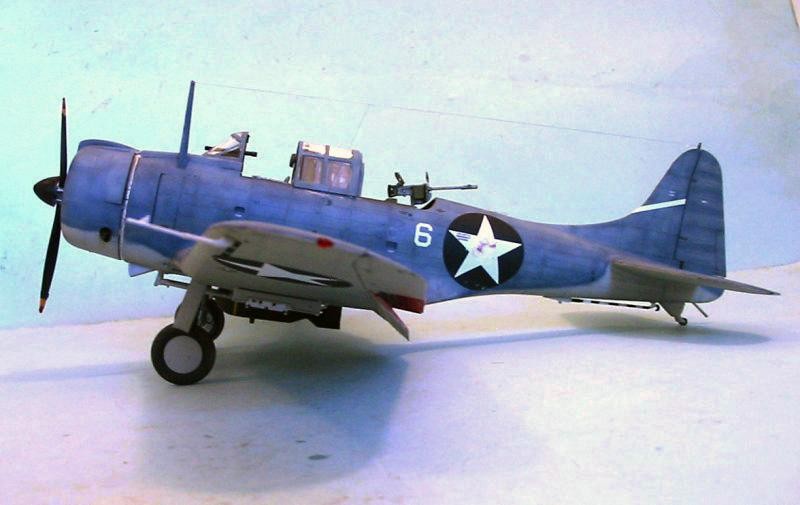
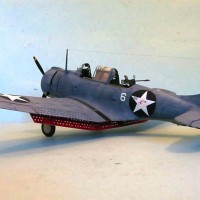
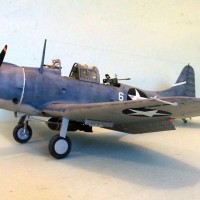
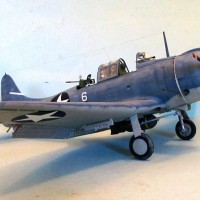
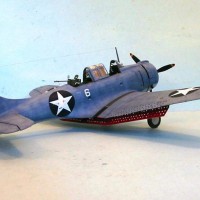
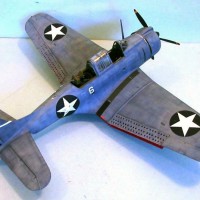
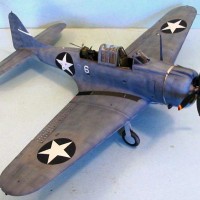
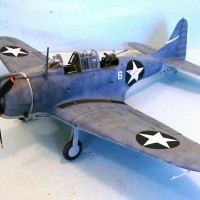
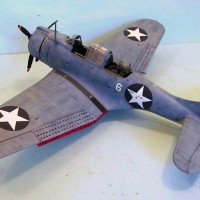
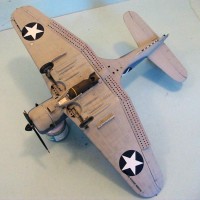
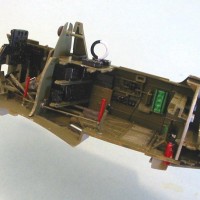
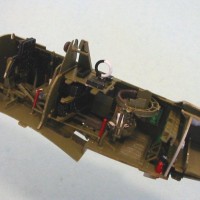
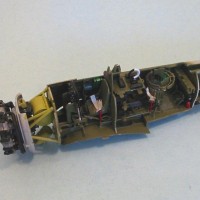
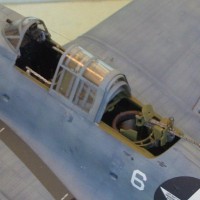
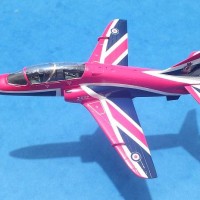
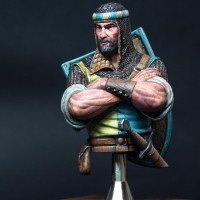

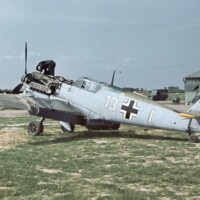
the fading looks pretty good.
Great article,history lesson and tutorial on how to do a scaled up Accurate Miniatures SBD. Given Trumpeters hit and miss approach to doing kits it would be logical for them to look at the Accurate SBD ... one can only imagine that they looked at there Avenger and scaled it up as well.
Excellent modeling too.
Two thumbs up.